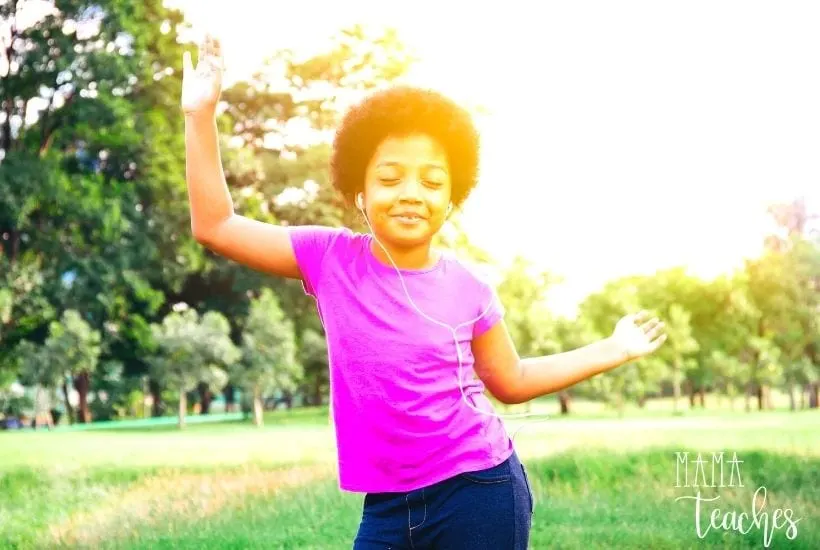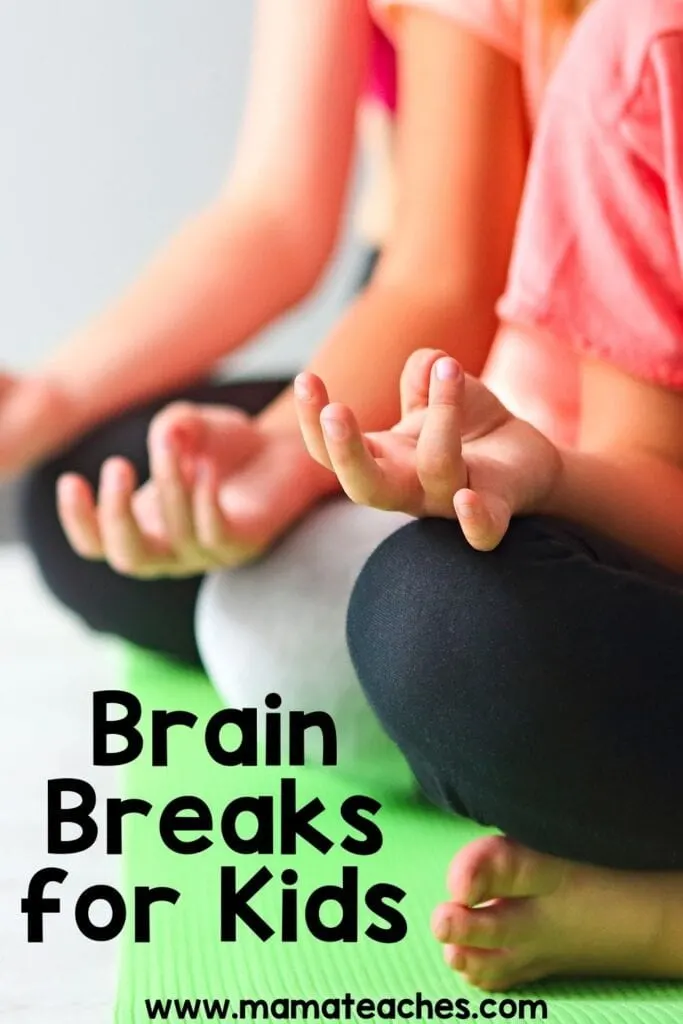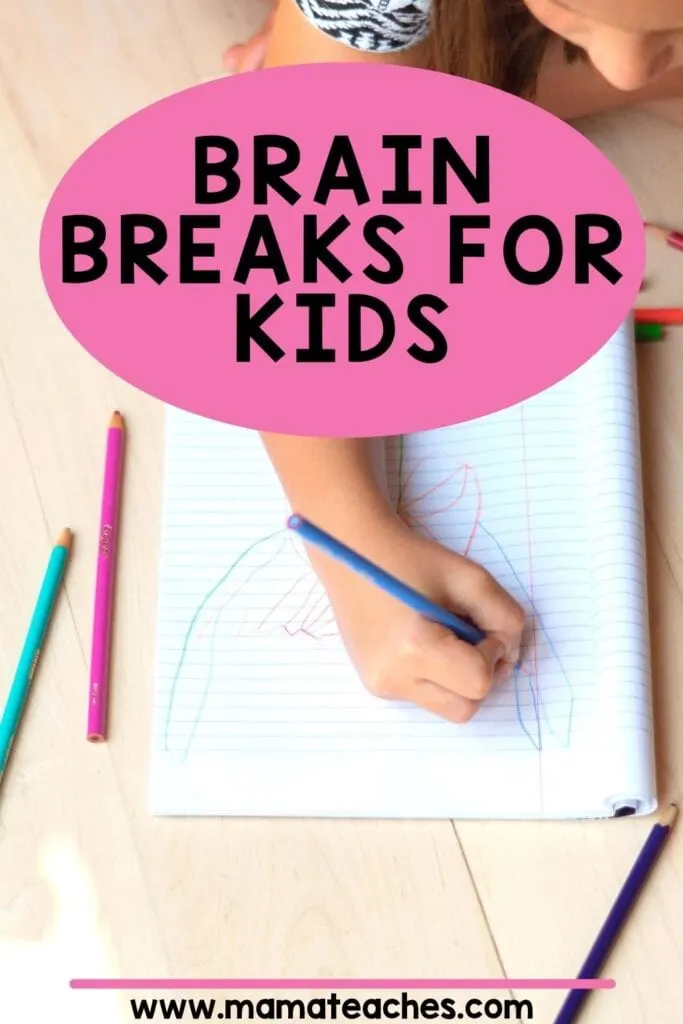You know you should intersperse learning with much-needed brain breaks, but how do you bring the fun?
Say hello to these awesome brain breaks for kids.

This article contains affiliate links to things that you might like.
Why Do Kids Need Brain Breaks?
Learning is taxing, and for school-age kids, their brains are engaged in heavy-duty learning for much of the day.
That can leave them mentally exhausted and prone to anxiety or frustration.
A well-timed break can stop that mounting frustration in its tracks and give kids a much-needed dose of stress relief.
Brain breaks are also beneficial as a time to reset and refocus.
Kids prone to distraction are re-engaged with a brain break.
It is a chance to recenter and return to learning mode.
Although it may feel like a time suck, brain breaks actually make your school day more productive because you are teaching relaxed and focused students.
How to Do Brain Breaks
Every student from pre-K to high school needs brain breaks.
They are most needed during times of intense learning (think independent work in writing, reading, and math).
You know the subjects and tasks your students find challenging or boring (both would require frequent brain breaks), so add brain breaks to these times especially.
Younger students need breaks every 10 to 15 minutes. Middle and high school students can work intensely for 20 to 30 minutes before needing a brain break.
Brain breaks for kids are typically 2 to 10 minutes in length.
They do not have to derail your teaching; they can be hands-on activities that augment what the students are learning.
If you are working on multiplication worksheets, a brain break could be a dice game where the students all stand up in lines and multiply the numbers they roll on two dice.
By taking turns, you get everybody moving and give their brains a break.
Brain breaks generally come in two categories: movement breaks and quiet breaks.
Change up the type of breaks through the day.
The goal of a brain break is to give the brain a chance to focus on something else.

Classroom Brain Breaks
Here are some ideas of brain breaks for the classroom.
Yoga Breaks
Have everyone stand and stretch.
Try yoga poses such as tree, chair, and warriors 1 and 2.
Push-Ups
Students don’t need to drop and give you 20.
Standing wall push-ups work well.
You can also do a chair pose against the wall as another alternative.
Jumping Jacks
Any version of jumping jacks or running in place (Run like a mouse! Jump like a kangaroo!) is a great cardio-boost and brain break combined.
Untangle the Knot
Have the class form a tight circle and reach into the center to grab the hands of two different people on opposite sides of the circle.
Now without letting go of anyone’s hand, the students must figure out how to untangle themselves to form one long line.
Sensory Break
Even older students love to handle a manipulative as a break.
You are never too old for playdough or water beads.
Feel Your Pulse
Have students close their eyes.
Ask them to be quiet and still enough to feel their pulse as they press two fingers to their throats.
Guided Visualization
Have students place their heads on their desks, close their eyes, and follow your visualization cues.
These could be as simple as a story imagining you are a popcorn kernel or one where you build a snowman and make snow angels or a story where you scuba dive through a tropical reef.

Virtual Brain Breaks
Brain breaks for virtual learning are a little trickier because the students must, by necessity, be able to do them alone.
These fun solo brain breaks will have your virtual class relaxed and ready for more learning in no time.
Dance Video
Screen share an active dancing video with your students.
Have them get up and get moving!
Scavenger Hunt
Give your students items to find in their house.
These can be revealing (“Find your favorite book!”) or silly (“Find the biggest spoon in the house!”).
Guess the Animal Sound
Play animal sounds for the students to guess (or make your own!).
Riddles and Brain Teasers
These are wonderful transitions to new subjects.
Sign Language
Teach your students a few sign language words each day.
Directed Drawing
Have students follow your step-by-step instructions to draw something real or abstract.
They can hold up their drawings afterward.
Starfish Breathing
Guide your students through some breathing exercises.
Teach them to fill their lungs fully (“Feel your belly expand. Now let your ribs expand too.”). Slow, measured, full breaths are wonderfully refreshing.
Try “starfish breathing.” The student places one hand on the desk and traces its outline with the finger of the opposite hand.
As he moves up a finger, he inhales.
As he traces down the other side of the finger, he exhales.
Ideas for Brain Breaks for Kids
Instead of following a formula, watch your students and anticipate when they need a brain break.
Remember, their ability to pay attention is much shorter than yours; they need breaks more frequently than you do.
Keep the day on track by using some of these ideas for brain breaks for kids.
